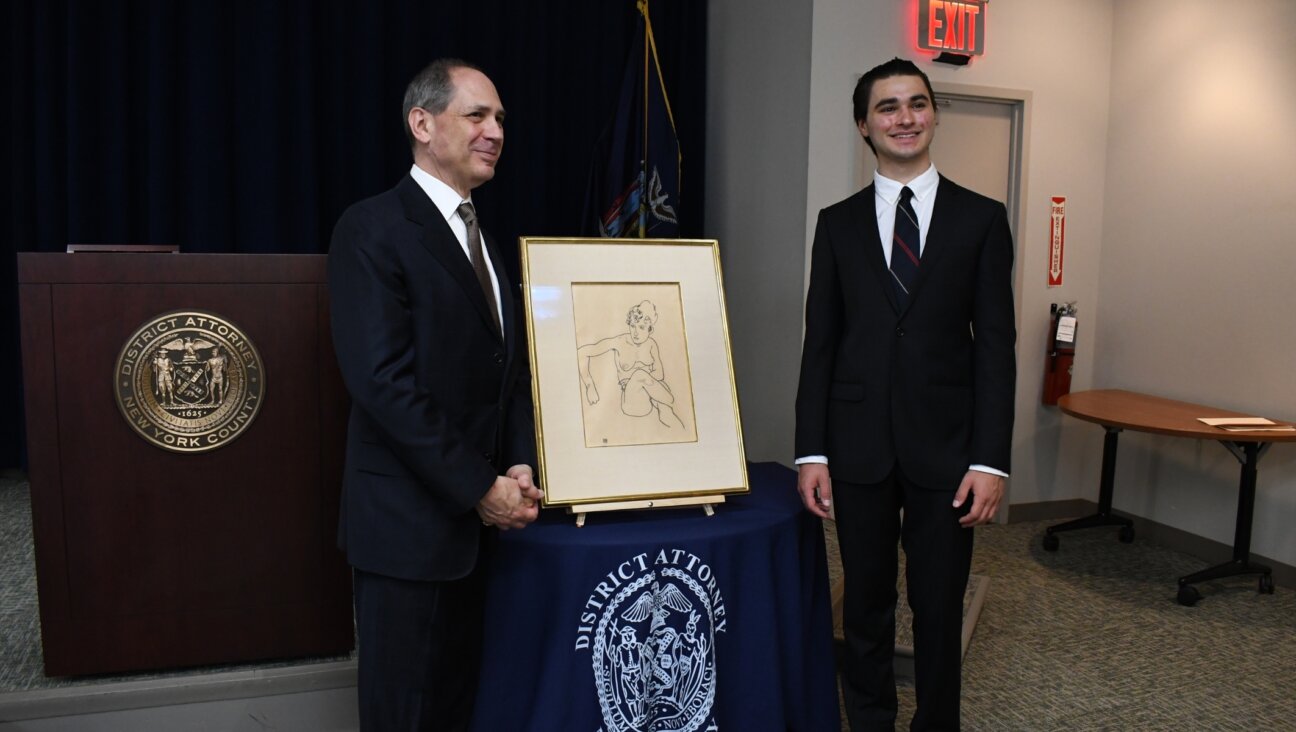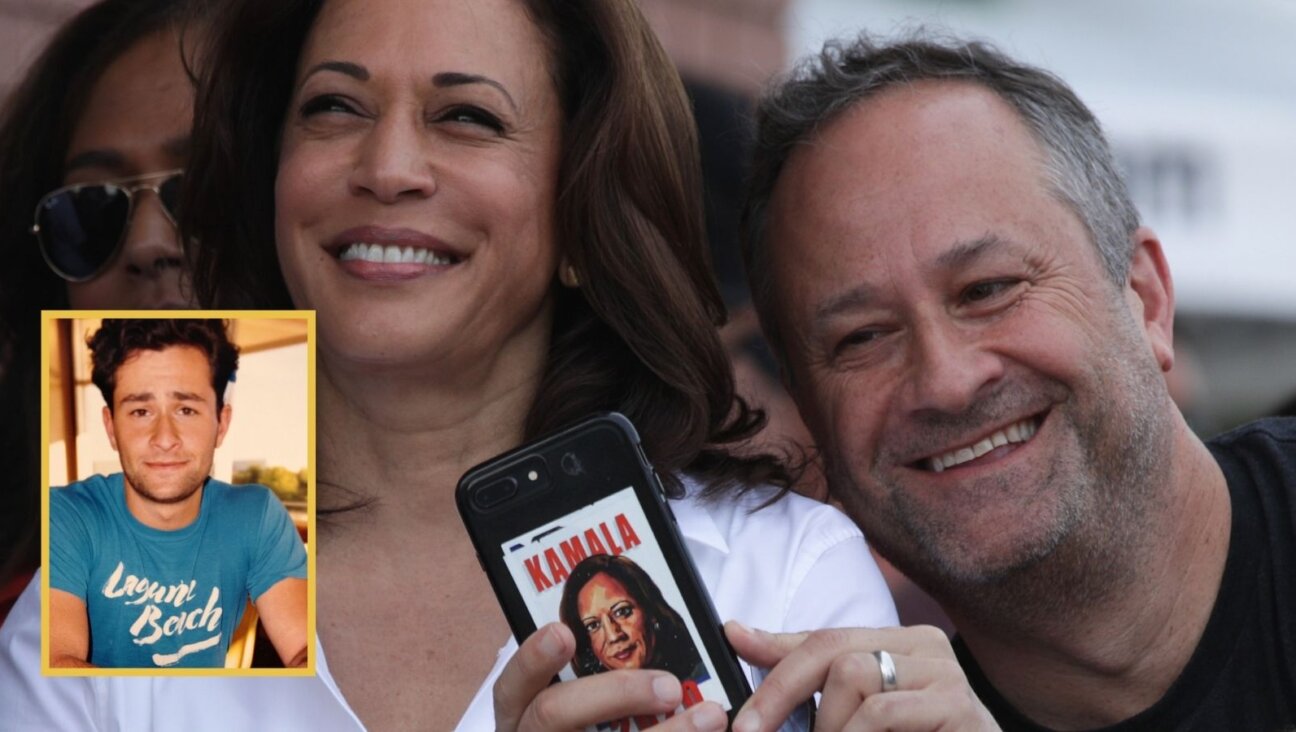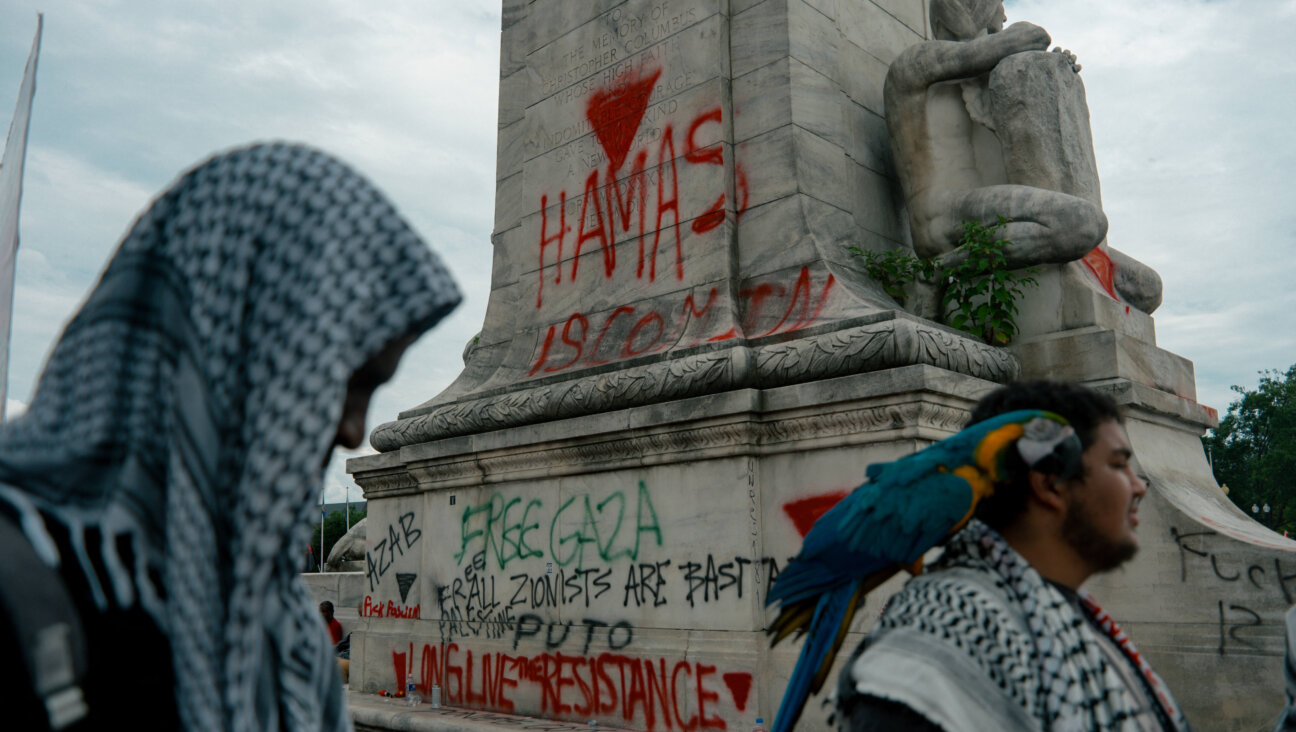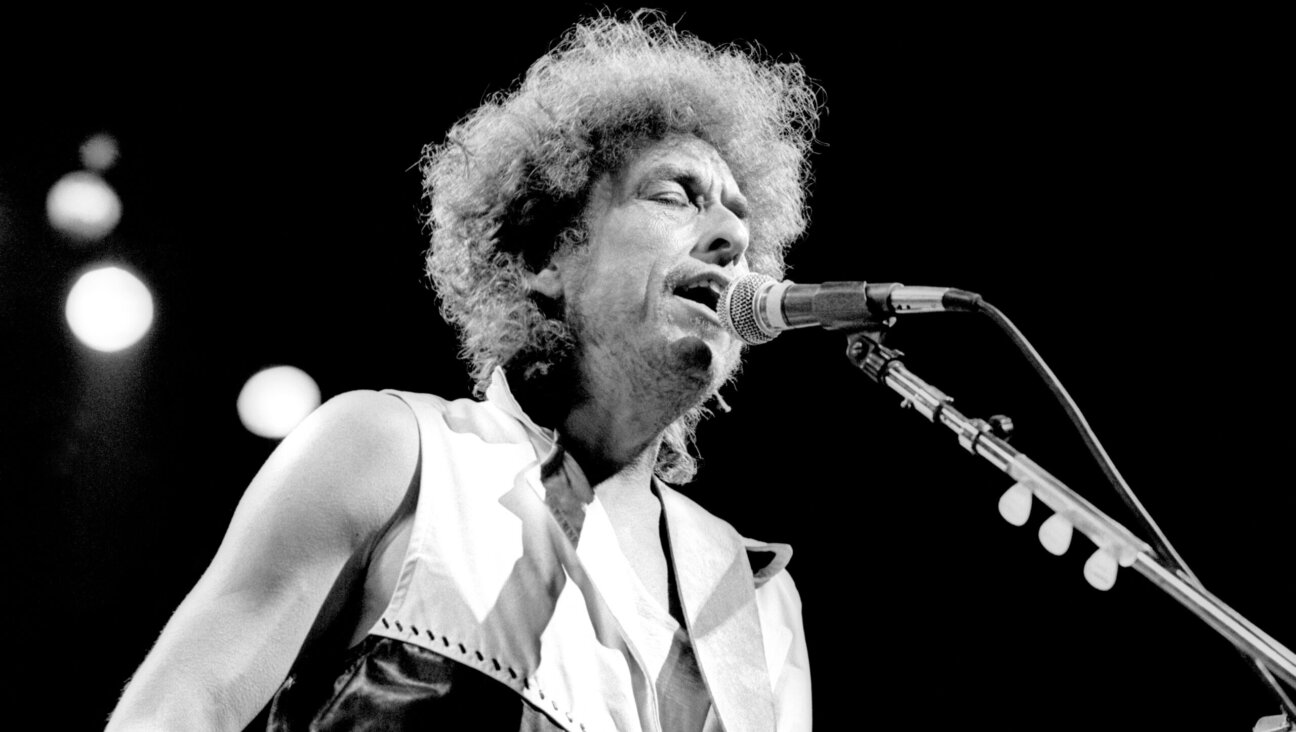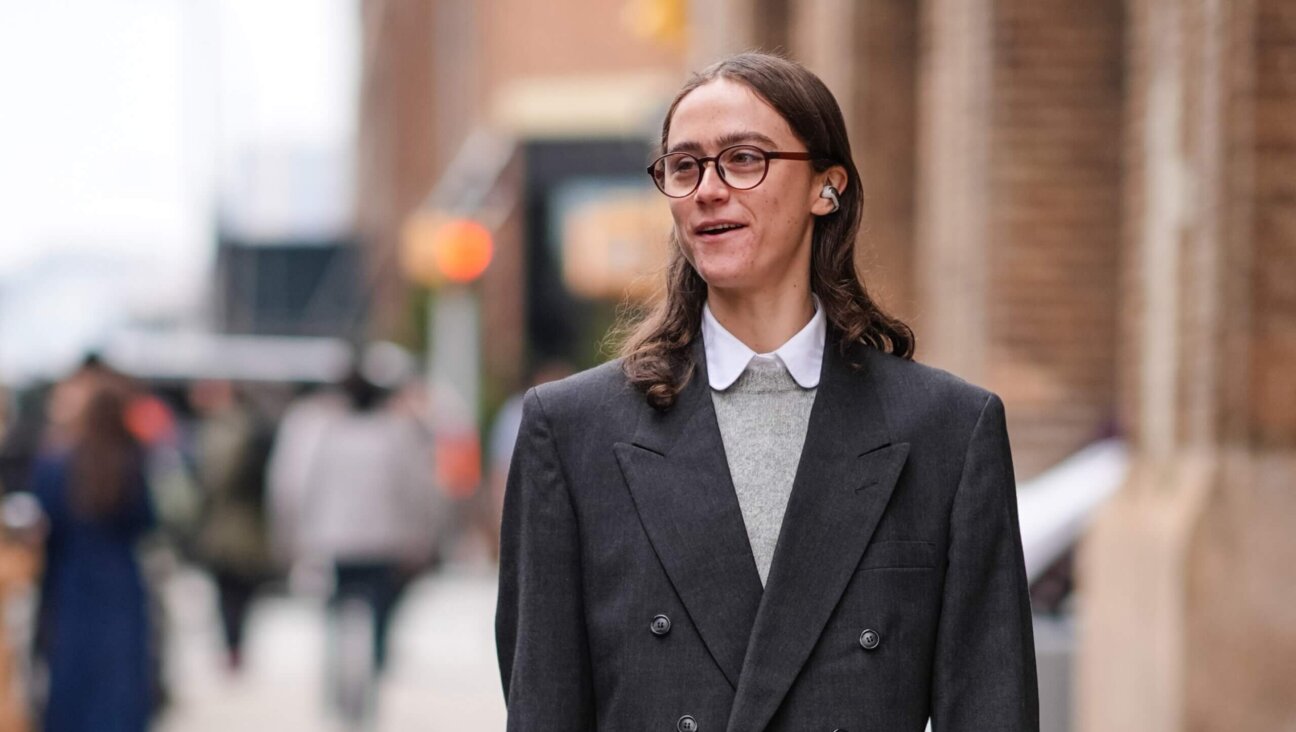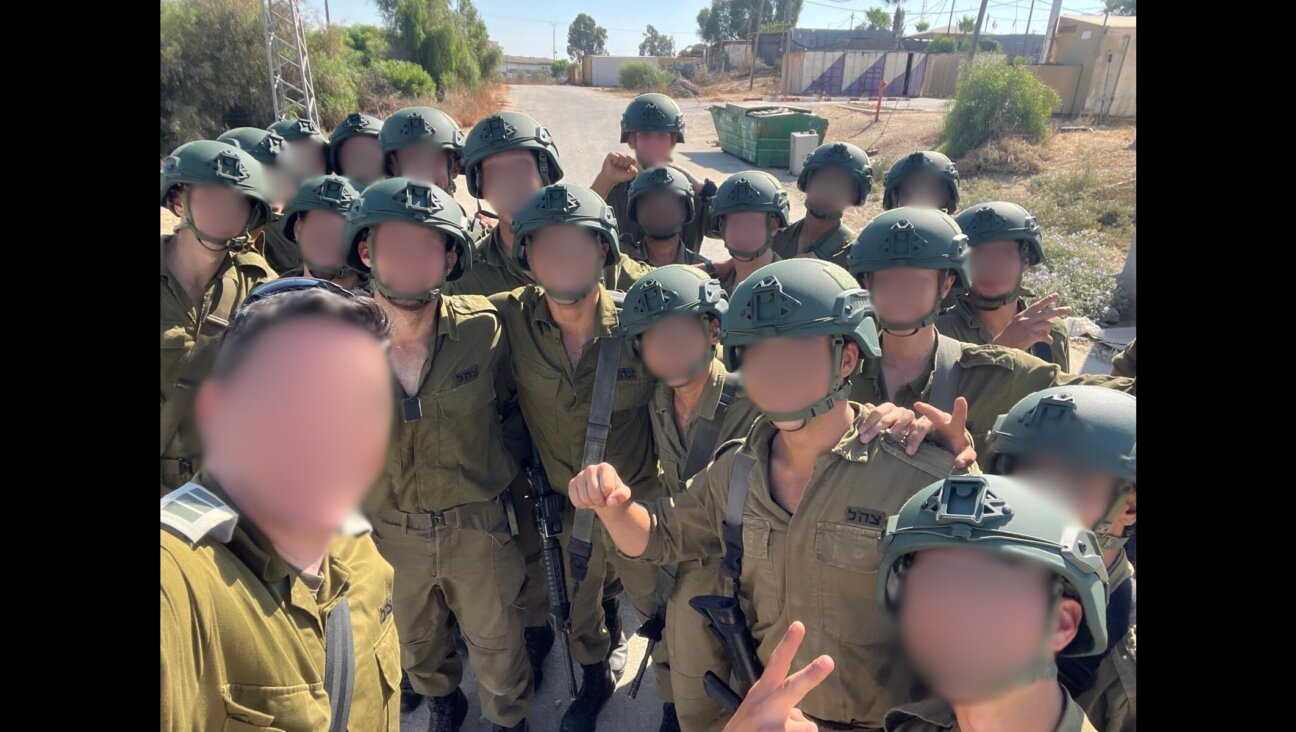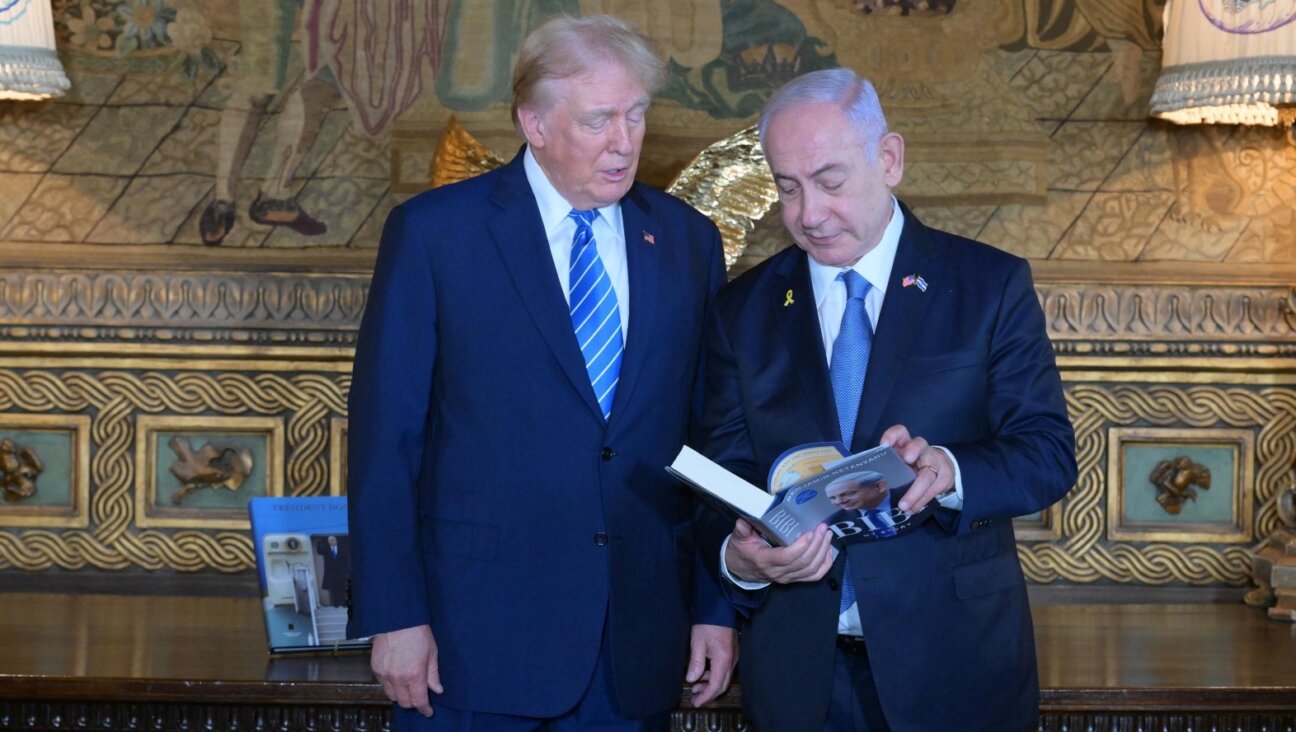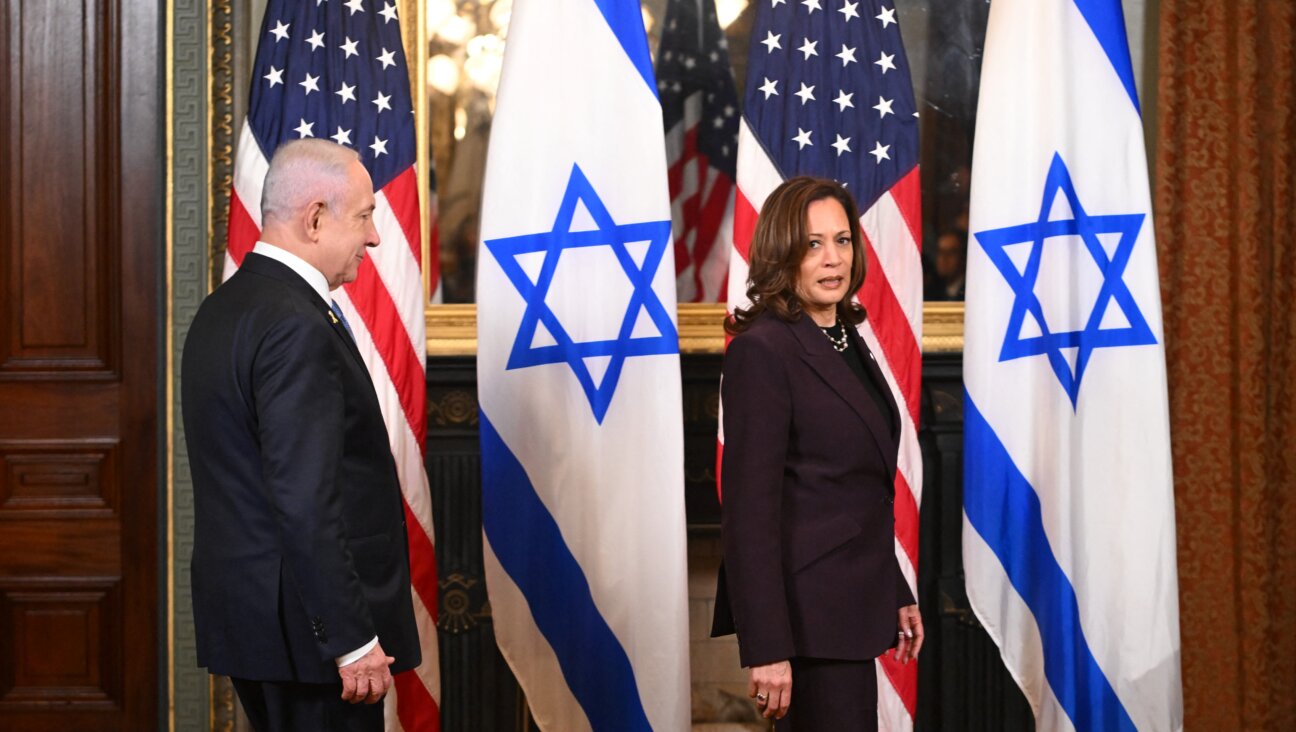This traditionally trained scribe is bending the rules — literally

Delmoor’s piece “Hineni” By Kalman Delmoor
Kalman Delmoor is a classically trained Hebrew scribe, or sofer, who sits in the Yochanan Ben Zakai historic synagogue, one of the Four Sephardi Synagogues in the Old City of Jerusalem. But he doesn’t spend his days writing tefillin or mezuzot. Instead, he turns passages from Torah or liturgy into artwork — some colorful, some minimalist, and all imbued with a deep spiritual resonance.

Delmoor with a piece of his artwork in the Old City of Jerusalem. Courtesy of Kalman Delmoor
When we spoke over Zoom, Delmoor was sitting in the synagogue, and our conversation meandered into discussions of Jewish philosophy, identity and Israeli culture.
Delmoor took an untraditional path to his current life, even getting kicked out of a yeshiva boarding school as a teen growing up in Minnesota. He found Judaism constricting; he preferred sports, and played basketball on his schools’ teams; he said he was “way too cool to be in a yeshiva,” and didn’t fit in easily in more traditional Jewish spaces.
It seems like a big leap to go from rebellious teen who desperately wanted to go to public school to traditionally trained sofer who sits in the Old City, but Delmoor’s understanding of Judaism underwent a huge shift when he was 18 and moved to Israel for his yeshiva year.
“The Judaism I encountered in Israel was very different from any Judaism I saw growing up,” he said. “The Judaism I saw was very black and white, very square. And it didn’t make sense to me. I like friends, I like deep conversations, I like action movies, I like parties, I like sports, and I just didn’t see a place for Judaism, it was just very meek.” In Israel, he said, religion felt more connected to the geography and physicality of the place. He transferred to a Hesder yeshiva, Otniel, a type of yeshiva connected to Israel’s religious-Zionist movement, and found a whole new version of Judaism. “You’re not wearing shoes and you have long hair and a ripped T-shirt and you know how to learn Gemara? That’s crazy, I didn’t know that existed,” Delmoor said.
Today Delmoor has found his stride, both Jewishly and artistically. His scribal work reflects both his deep religious commitment as well as his philosophical orientation toward it. Just as he has found a Jewish philosophy that feels less black and white, his scribal work often features colors or forms the texts into winding patterns. He is currently featured in an exhibition at Adas Israel in Washington, D.C., soon to be in one at the Hand also teaches workshops for tourists, academics and yeshiva students.
Yet it’s not all so simple; his work poses religious tensions, as many people believe scribal Hebrew and holy texts should be limited to traditional forms. I spoke to Delmoor about his art, his Jewish identity, and how it all fits together.
How did you discover that your calling was sofer work? It’s such a specific vocation, especially for someone who wasn’t drawn to more rigid practices.
In my third year in Israel, I had a friend who learned classical scribing. He was writing a Megillat Esther, which is what you write when you start scribing because it doesn’t have God’s name in it, so the laws are much easier. But it’s still a sacred scroll, so it’s a great serious beginner thing to do. And I saw the letters and I was just obsessed, immediately. It was like my calling.
It captivated me because it’s a combination of an artistic and technical and very thoughtful practice, all in one. The letters can be very meditative, very grounding, every letter is like its own little art piece. What really drew me to scribing was a combination of the technical and the conceptual — bringing the Bible to life with your hands.
How did you move from traditional scribing into this more interpretive art form?
When I drafted into the army in 2012, I had written a couple scrolls, a couple megillot. I didn’t know exactly my direction, I called it my “holy hobby,” it was kind of a meditative practice. But it was during my army service that I went more into this art form, out of necessity — I didn’t have the time nor focus to be writing a whole scroll. I was like, “I have some scraps of parchment and some free time, let’s see what happens.”
It was this synthesis between this classical Jewish art form — because you need to be an artist to be a good scribe, it’s not just a scholar or a rabbi — and the world of thought. I’d gotten immersed in this Hasidic, flowing, esoteric, philosophical energy. Maybe that’s just me in general. But I thought wow, I can show the world how beautiful, how deep the Hebrew letters are. I don’t need to do a secondary thing, like paint a border. It can be the letters themselves.
So how did you come to sit in this synagogue in the Old City? That seems like a prime location.
Elohim Gadol, that’s my two word answer.
I got out of the army in 2014 and that’s when I got certified as a scribe, with the rabbinical certification. I’m kind of anti-establishment, but I did it as a boost of confidence, that this is the direction I’m going, and to make my American family proud.

The view from Delmoor’s seat in the Yochanan Ben Zakkai synagogue Courtesy of Kalman Delmoor
Then I got a job as a dorm counselor in a yeshiva program in the Old City, and there was a gallery here called the Fifth Quarter looking for a scribe.
Simultaneously, I decided I wanted to do these scribal workshops. I wanted to go into the depth of the letter, teach people how to write, and end it with a meditation. I did it in Nachlaot, weekly for 22 letters, for free. It helped me organize my thoughts, and my teaching gave me exposure.
I had an amazing opportunity to speak with the manager of the synagogues here. They do a lot of events, bar mitzvahs and Shabbat prayer — but day to day, it was a little dead, they were looking to bring it to life. That’s my whole thing, bringing the letters to life, bringing the tradition to life. I can do a workshop for 50 people easily in this beautiful, massive synagogue. Now I’ve been here for four years.
What texts or styles do you turn to most?
I’m very open-minded about styles. I do a lot of collaborative work, I wouldn’t say I’m stuck on any particular thing besides the letters, and my commitment to the letters. So I do custom work, where I’ll consult with someone and make a custom piece for them; the idea is that I’m just the vessel for them to manifest their insight. I’ll take their favorite verses, maybe the shape or the style, and try to fuse these things together. The goal of the work is to be able to get an insight into the content just be looking at it, so you can be inspired by the aesthetic, and all the more so if you can read it.

Delmoor’s piece “Hineni” By Kalman Delmoor
My favorite stuff personally is minimal work that can be a conversation piece. It’s like a Torah, but it can be discussed, it’s interpretive, and to me that’s the highest level. In my personal artwork, I would say connecting to sentences that inspire me, things that I take lessons from — for example, I’ll be reading through the siddur, and a verse will speak to me.
I love the conceptual stuff. I just finished an exhibition for Hebrew University, actually, working side by side with a bunch of academics, which was a dream come true — so I don’t have a college degree but I have an exhibition that’s going to be front and center at Hebrew U.
Your scribe work is not the most traditional. Do you run into opposition or judgment for bending any religious rules?
From a religious perspective, we say Hebrew is the holy language, lashon hakodesh, and even more so, the writing of the Torah scroll. There’s some strict opinions that say writing in the Torah style should only be in the Torah books. It’s a strict opinion, very minority, but I’m sensitive to it. When I started, I questioned it, I didn’t know whether I’d get a lot of hitnagdut [opposition].
I went to one of [noted Talmudic scholar] Rabbi [Adin] Steinsaltz’s classes and I brought a piece that I’d been working on. In hindsight it was a very simple piece, a small piece, but at the time it was one of the more interesting things I’d done. And at the end of the lecture, I show him the piece and I say, “Rabbi, I’m a scribe, I do scribal art, this is an example of what I do. Is it okay?” And he looks at me and he smiles, kind of chuckles, and he’s like, “Greater people have done much worse things,” and walked away.
That was the message for me that I had to kind of decode. At the time, I think he meant it was OK. And that was the rabbinical acceptance I needed in order to be confident and kind of push forward.
What specific laws do you have to contend with in terms of how you change the letters for your art?
One of my favorite styles is embellishing the letters by stretching them out, and I learned that through the principles of writing for the Torah. When you see the Torah from far away, you see the beautiful black columns, perfectly symmetrical, and then you come closer and see the beauty of the letters themselves. That beauty of the columns, they have to be very very straight, and so the way it’s done is that sometimes the letters are extended or stretched or shortened in order to fit into the column. I really love that, and I love the exaggeration as an art form, so a lot of my art is embellishing the letters and stretching them.

Delmoor’s “Bereshit” By Kalman Delmoor
There’s one piece, it’s seven circles and it’s insanely embellished. It’s one of my favorite pieces. It says “Bereshit bara Elohim et hashamayim ve’et haaretz,” [in the beginning, God created the heavens and the earth] and is more of a meditative piece.
I know Jewish holy texts are buried instead of thrown out. Do you have to contend with that when you’re sketching, or making drafts?
The most important thing is when you write God’s name, you know what happens. You can’t erase God’s name. You can’t sell God’s name to someone who doesn’t know what to do with God’s name. So you shouldn’t sell God’s name to a non-Jew because we don’t know how they will or won’t respect it. Or you shouldn’t even sell God’s name to a Jew who won’t know what to do with it — for example, you shouldn’t put God’s name in the bedroom, you shouldn’t put God’s name in the bathroom. And that’s the halacha.
In addition, there’s sensitivity to the letters themselves, so my scrap pieces I try not to throw out. I try not to be obsessive about it, I’ve tried to find a balance, but a lot of writing, I like to preserve or put in the genizah [a storage place for Jewish texts before burial].
There’s also some tricks to the trade that I’ve learned. Writing God’s name in artwork is a huge question mark, and for me it’s kind of a no-no. I’m going to show you a piece and explain what I do.

The broken ה letter, with a break in the right leg invalidating it. By Kalman Delmoor
So it looks like God’s name, right? But I break the letter. In God’s name, in the ה, there’s a crack in between the right leg and the top. That invalidates the letter, therefore according to Jewish law, that is not God’s name — but to the eye, it looks like God’s name. So I try to create a balance between the might, the power of God’s name, and not actually making halachically God’s name. Therefore I can sell it to anybody. Obviously I don’t want it to be thrown out or put in the wrong place, but it doesn’t have the halachic power of God’s name. And in a more esoteric way, it doesn’t have the energetic kedusha [holiness] of God’s name.
A message from our editor-in-chief Jodi Rudoren
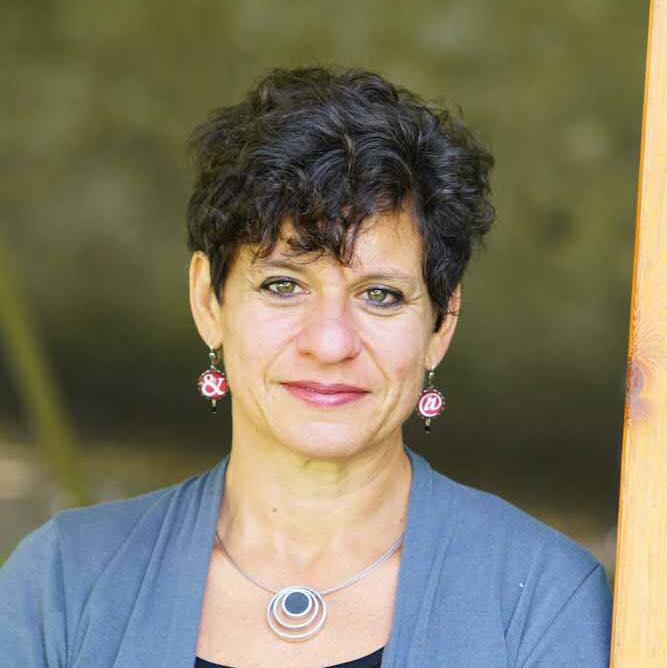
We're building on 127 years of independent journalism to help you develop deeper connections to what it means to be Jewish today.
With so much at stake for the Jewish people right now — war, rising antisemitism, a high-stakes U.S. presidential election — American Jews depend on the Forward's perspective, integrity and courage.
— Jodi Rudoren, Editor-in-Chief







